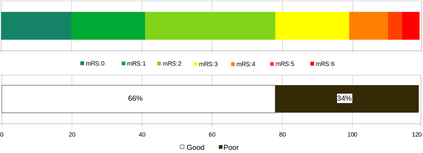Patient outcome prediction is critical in management of ischemic stroke. In this paper, a novel machine learning model is proposed for stroke outcome prediction using multimodal Magnetic Resonance Imaging (MRI). The proposed model consists of two serial levels of Autoencoders (AEs), where different AEs at level 1 are used for learning unimodal features from different MRI modalities and a AE at level 2 is used to combine the unimodal features into compressed multimodal features. The sequences of multimodal features of a given patient are then used by an LSTM network for predicting outcome score. The proposed AE2-LSTM model is proved to be an effective approach for better addressing the multimodality and volumetric nature of MRI data. Experimental results show that the proposed AE2-LSTM outperforms the existing state-of-the art models by achieving highest AUC=0.71 and lowest MAE=0.34.
翻译:病人结果预测对于缺血性中风的管理至关重要。本文提出了一种用于中风预测的新型机器学习模型,利用多模态磁共振成像数据。所提出的模型由两个串行级别的自动编码器(AEs)组成,其中不同的级别1的AEs用于从不同的MRI模态学习单模态特征,级别2的AE用于将单模态特征组合成压缩的多模态特征。给定患者的多模态特征序列然后由LSTM网络用于预测结果得分。证明了所提出的AE2-LSTM模型是处理MRI数据的多模态和容积性特性的有效方法。实验结果表明,所提出的AE2-LSTM模型优于现有的最先进模型,达到最高AUC=0.71和最低MAE=0.34。







